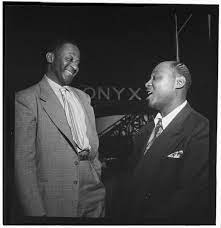Blog
The Lincoln School For Colored Children

EDITOR’S NOTE: In 1881 Crawfordsville School Trustees ordered a school be built at the southwest corner of Spring and North Walnut Streets to serve black students in grades 1-8. Once graduated, the students attended the integrated Crawfordsville High School. This site accommodated the vast majority of black families living in Crawfordsville’s north end. Trustees purchased the lot in September 1881 for $2,000. On Dec. 3, 1881, Hinckley and Norris won the contract to build the building for $6,400. The architects designed a plain two-story red brick structure with playgrounds for all the black children who resided in that area. Lincoln School officially opened in September 1882 with 42 students. When the black population moved to the east end to work in the factories, Linclon Building 1 was renovated into Horace Mann, and Linclon Build 2 was opened on East Wabash Avenue. That building became Lincoln Rec Center and was demolished in 1981. This project began as a project historical research project to honor all those individuals who went to school in separate and unequal facilities as the law dictated.
Wilbur was born on 20 September 1900, according to his official World War II draft card. The family initially resided at 125 Main Street and later at 601 Illinois Street. Wilbur’s mother was Fanny/Fannie Hyatt. His father, Sidney Paris Senior, from West Virginia, was a schoolteacher, auctioneer, and musician who played trombone, banjo, and guitar, touring the country with carnivals, circuses, medicine, and minstrel shows to support his family. At age 5, Wilbur’s career began unofficially when one night, he ran away to see the carnival. His father eventually found him and administered discipline but chose to start formally teaching him how to play the alto saxophone. When Wilbur was six, his father took him to the Plantation Show Tour in New Orleans. After this trip, Wilbur, and his brother Sidney, born in 1903, chose to begin working with their father, Sidney Senior.
Very little is known about Wilbur’s Crawfordsville childhood. He graduated from the Lincoln School for Colored Children on Friday, 4 June 1915, during commencement exercises celebrated at the AME Church. In an interview from 1958, Wilbur vividly remembered the “floating island dessert” he was forcibly learned to make at Lincoln School under Miss Majorie Benckart’s direction. This French dessert consists of vanilla custard topped with sweet, whipped egg whites. Jazz trumpeter Bill Coleman recalled that he and his siblings attended school with the De Paris brothers. Wilbur played in the Crawfordsville High School band, suffered from acute basketball fever, and graduated from Crawfordsville High School in 1919.
Francis Wooden recalled her mother taking her to a Crawfordsville minstrel show featuring the family. Francis remembered the show on the third floor of the Woodsman of America Hall at 120 North Green Street, directly across from the Journal Review offices. All who went to see the group were required to climb the three flights of steps, but the long trek was worth it because all three members of the troupe individually greeted all attendees.
Wilbur left Crawfordsville soon after his high school graduation and, in 1919, began playing with a small band that performed at Philadelphia’s Pearl Theater, which he eventually managed. He traveled to New Orleans in 1922 with Mack’s Merrymakers and played with Louis Armstrong and Jelly Roll Morton. He even taught both of Morton’s sons music. During the 1930s, he worked with various groups, including Noble Sissle and Teddy Hill. In the 1940s, he recorded with Ella Fitzgerald and Duke Ellington and played in the pit band for the Broadway show The Pirate (1942). In the 1940s, he toured with The Roy Eldridge Big Band, Duke Ellington, and Sidney Bechet. He formed his own highly successful small band, the New New Orleans Jazz Band, with his brother Sidney De-Paris and Omer Simeon, modifying their sound by blending swing, spirit, and jazz. In 1951 the group moved into Jimmy Ryan’s in New York for a contracted two-week gig. Ten years, ten months, and two weeks later, the group finally moved on simply because the building was razed. While at Ryan’s, Wilbur and his group found time to record eight albums for Atlantic Records, play movie background music, and appear on radio, television, and concerts. The band also played original music written by Wilbur and classics such as On the Banks of the Wabash and Indiana, My Indiana. He led his rehearsal studio in New York in 1971 and worked as a leader and arranger until 1972.
Off the stage, Wilbur’s contemporaries described him as a gracious and articulate man who looked and acted more like a professor than a jazzman. These characteristics made him an ideal choice for a 1958 special assignment he considered his greatest accomplishment. Wilbur embarked on a three-month tour of Africa as the official United States Ambassador of Music to Ghana and Africa. As part of the president’s international program for cultural relations, Wilbur accepted the mission with dignity and a complete understanding of what the government expected of him.
At some point, Wilbur married Alabama-born Thelma (when she was 16 years old and he was 19) and fathered two sons, Stephen and Todd, and two daughters, Melanie and Karen.
Wilbur began to slow down as his brother Sidney’s health declined. Wilbur cared for Sidney until Sidney’s death on 13 September 1967. Wilbur died in early January 1973 in New York.
